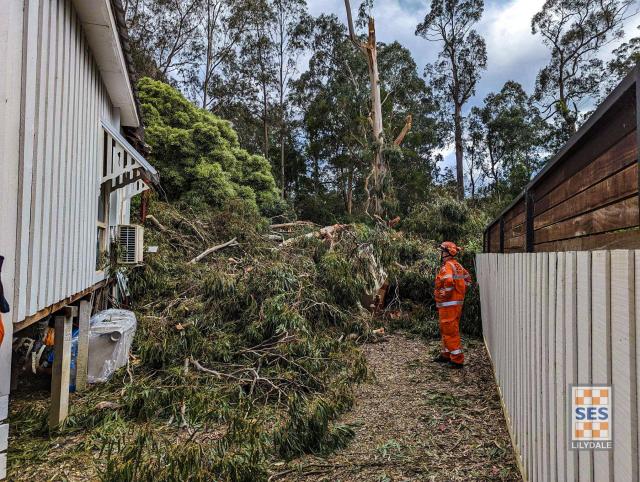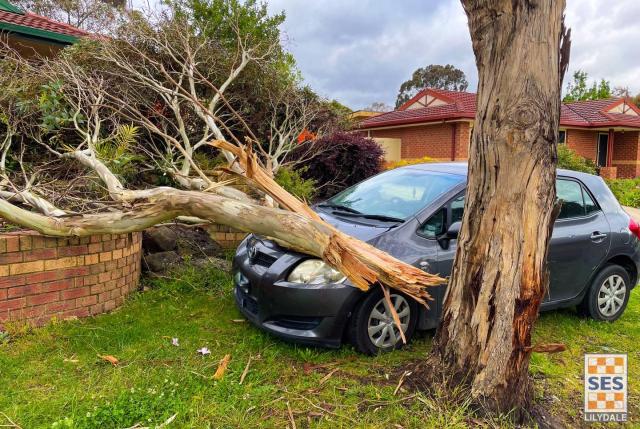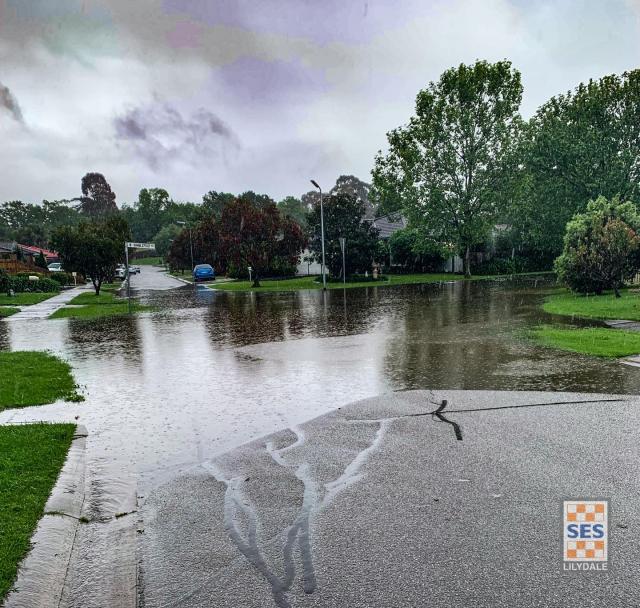
By Mikayla van Loon
Lilydale has been identified as one of the three main hotspots for storms in the state, with warnings for residents to prepare for a potentially wild summer season.
The data collected by VICSES between July 2022 and June 2023 placed Lilydale in third position out of 10 hotspots across Victoria.
Benalla and Echuca placed first and second, while nearby Croydon came in at seventh.
AAMI Insurance also listed Croydon as a hotspot based on 14,887 weather-related home insurance claims, with the suburb again sitting in seventh place.
Lilydale SES unit controller Shaun Caulfield said the top three spot didn’t come as a surprise to him based on the number of storm related call outs the unit has responded to.
“Our operational tempo has been such that we’re fairly well aware of how busy it’s been in the last two or three years particularly,” he said.
“We’ve noticed how busy it is and members can certainly attest to that by the number of times the pager is going off.”
The VICSES data showed volunteers had 32,985 requests for assistance across the state, with Lilydale receiving 195 of those requests.
Mr Caulfield said there has been a noticeable “uptick” in storm related requests for assistance, something that has remained consistent since the June and October 2021 storms, as well as flooding in October 2022.
“It is increasingly obvious that changes in weather patterns are more disruptive now than we feel like they have been in the past,” he said.
“There’s a range of reasons, some obvious reasons for that. We’ve seen the well established El Nino La Nina weather patterns cause a variance in weather but we seem to be seeing a greater impact from the storms that we are having.”
With Lilydale SES being one of the main responding units for the Valley and parts of the Dandenong Ranges, Mr Caulfield said the varying environments is also a contributing factor in the frequency of call outs.
“Our unit covers both the flat pastoral, Yarra Valley river flats type area, as well as the more heavily treed areas into Mount Evelyn, but also obviously up onto the Dandenongs and up into Yellingbo and Macclesfield.
“So having that very diverse environment means that we are likely to be impacted by both of those types of incidents. Some other units will see more of a single threat axis, if you like, where they might be more prone to riverine flooding.
“If you look at the large flooding event in northern Victoria, most of those units know that flooding is something they will deal with. They may do less with the storm events because they’re in a more rural area. We have a combination of both.”
The severity and classification of what defines a storm event, Mr Caulfield said, has also “seen a shift recently”.
“We tend to think of storms as your thunderstorm with a bit of a strong wind. But that does encompass a wide range of things from trees down to tiles and roof sheeting being blown off, as well as your flash flooding.”
While the Yarra Ranges hasn’t seen prolonged riverine flooding “for a little while”, Mr Caulfield said the flash flooding events, like those last year, can be just as disruptive and damaging.
AAMI Executive General Manager Home Claims Alli Smith said the variety of home damage claims just showed over the last year how unpredictable Victoria can be.
“Storms are a normal part of everyday life in Victoria, which means damage from them can catch people off guard,” she said.
“Aussies tend to have a ‘laissez faire’ attitude when it comes to preparing for summer storms. However, what Victorians don’t realise is that storms can be a serious event and don’t need to last long to cause severe damage to their homes.”
Mr Caulfield echoed this sentiment and said “it is a classic Australian and very Victorian mindset to think that summer equals fires”.
“It does, there’s no two ways about that but what we also get is very disruptive weather. When we do get the storms that come in late spring and through summer, they tend to have strong winds and those winds are often at what they call destructive levels where you get branches coming off or you get trees uprooting.”
VICSES Chief Operations Officer Tim Wiebusch said as with any high risk season, SES volunteers are ready to respond but individual preparedness is essential.
“Don’t wait for the emergency to have a plan. It is vital to know your risk and to have a robust plan in place for storms, flash flooding along with potential bushfires,” he said.
Mr Caulfield said preparing for fire is just as important as preparing for summer storms, with many of the preparedness techniques the same.
“We need to maintain our awareness and preparedness just in the same way that we’re alert to fire. We should be alert and aware of the impacts of storms even into the hotter months, which we might not necessarily always directly associate with storms.
“A lot of your bushfire preparedness will actually also help you prepare for storms. So it’s about keeping the gutters clean…Making sure that any vegetation is kept down and big bushy trees around your house at a sensible height and amount of foliage.”
To find out more about how to plan for storms, go to ses.vic.gov.au/plan-and-stay-safe/emergencies/storm
If impacted by a storm event call SES on 132 500. If someone’s life is at risk, call 000.








